America’s M1 Carbine
vs. the German StG44
August 9th, 2022
12 minute read
“Shorter and lighter, but with more firepower.” During the 20th century, in the world of military firearms design, that became the ultimate quest. For quite some time, the commonly held belief was that you could have any two of those attributes in a rifle, but never all three. In this M1 Carbine vs. StG44 comparison, we take a look at how these guns exemplified this concept.
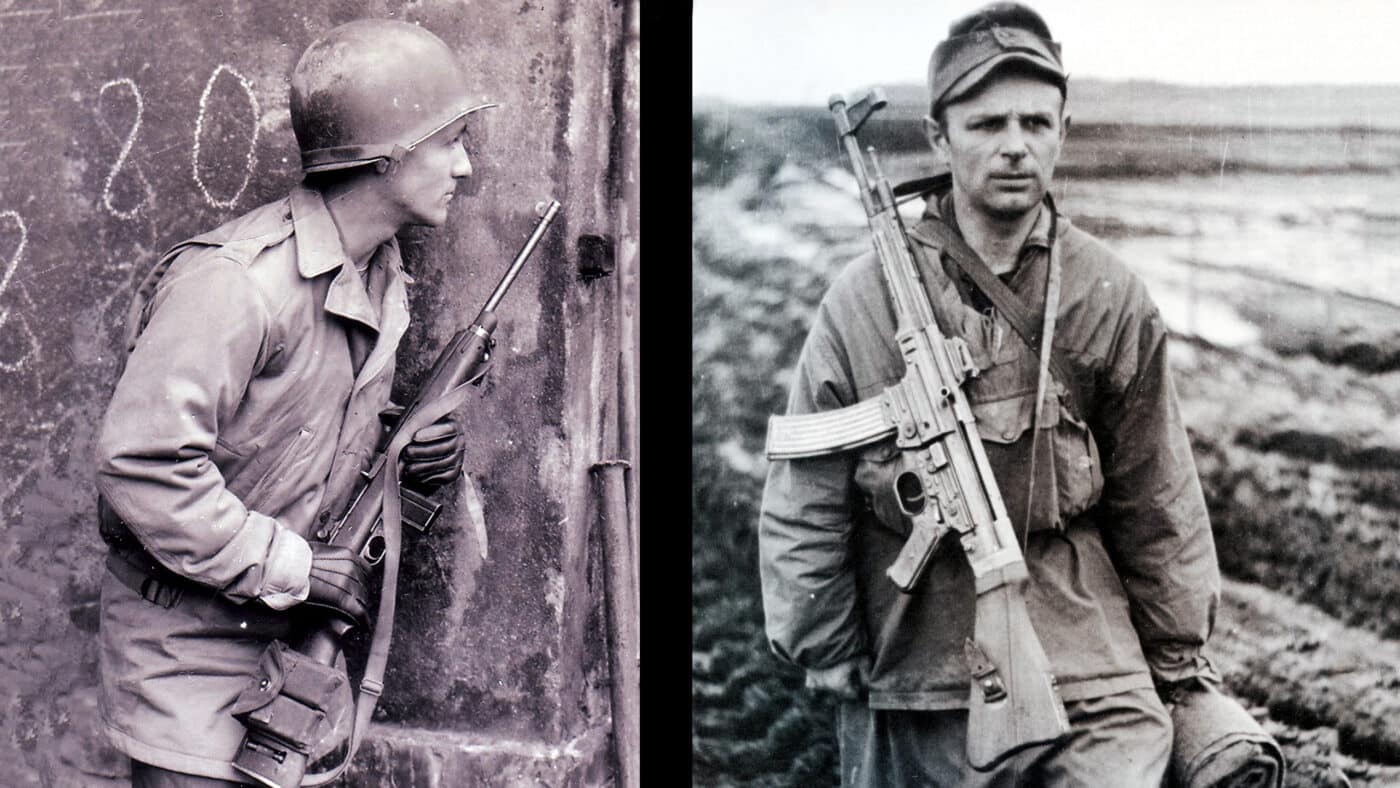
The race for greater infantry firepower began during World War I, and the pace escalated with each passing year through World War II and into the Cold War. We’ll look at two highly influential weapons in this category that were born during World War II — the U.S. M1 Carbine and the German series of Sturmgewehr rifles. Both addressed the same challenge, and both solved it in similar, and yet very different ways.
A New Cartridge
The search for a new cartridge began shortly after World War I. Designers sought something smaller than the standard rifle and machine gun ammunition, but more powerful than normal pistol rounds. As a type, submachine guns debuted on the battlefield late in the Great War, and quickly became popular in the early postwar period.
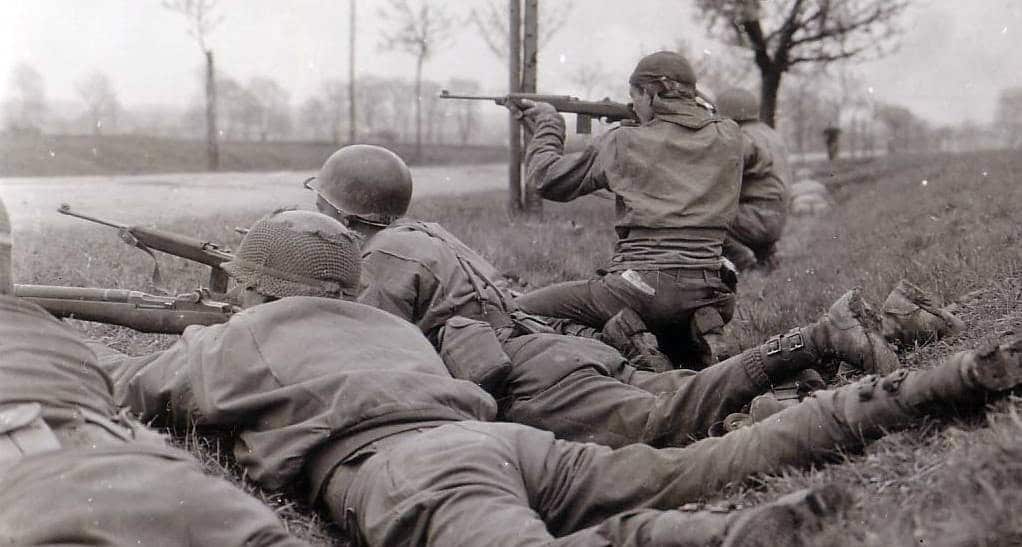
Combat ranges grew shorter, and the desire for compact, short-range firepower began to dominate new concepts in firearms. The small conflicts that broke out around the globe during the 1920s and 1930s proved their worth (up to a point), with predominately 9mm designs coming from Europe, and the .45 caliber Thompson submachine gun born in the U.S. Even so, the sub-gun always left something to be desired (namely range and accuracy) and the traditional infantry rifle still dominated the battlefield.
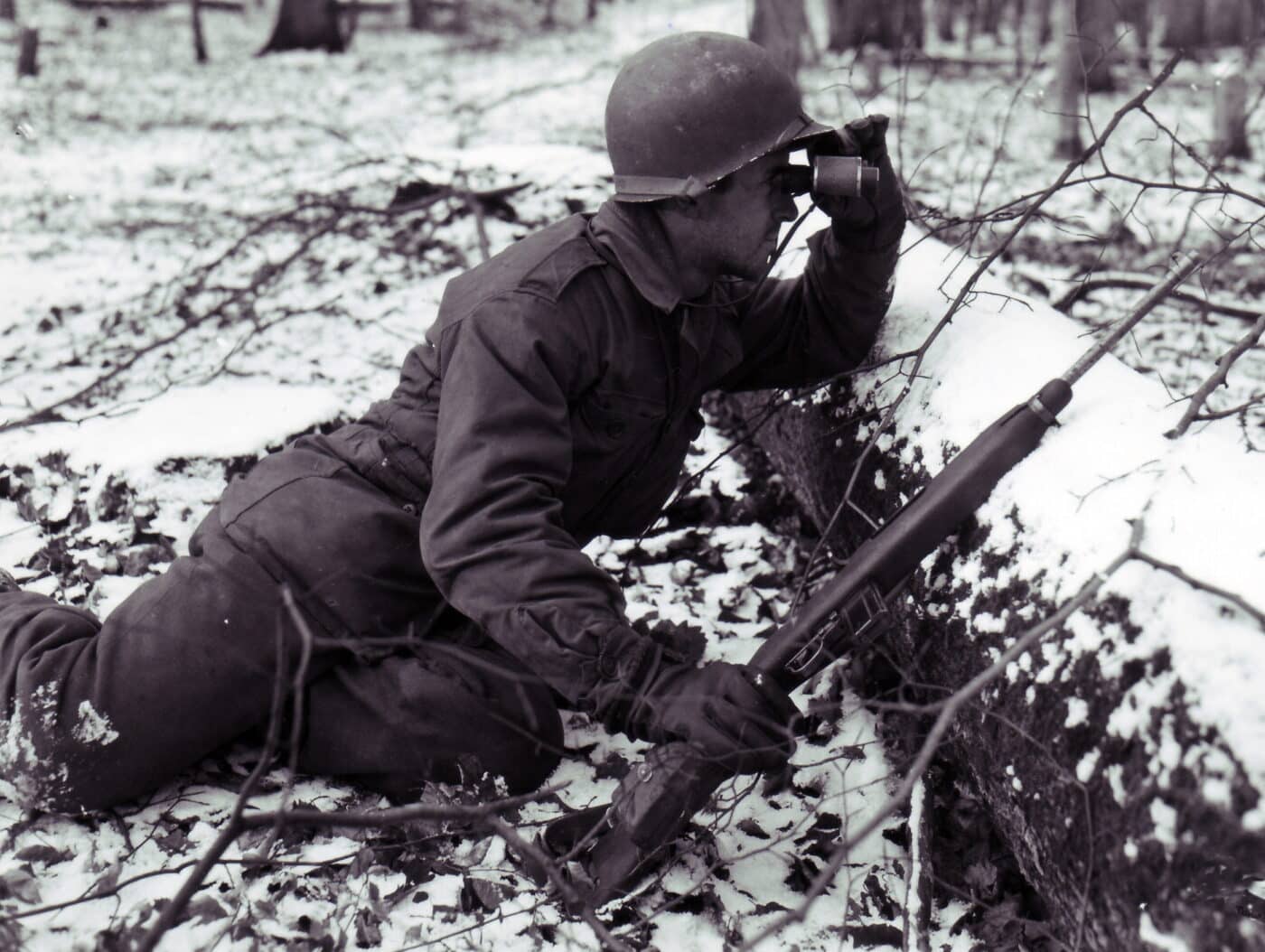
German designers experimented with some new intermediate cartridges, while America flirted with the .276 Pedersen. Neither achieved any great traction as U.S. Ordnance moved towards the semi-auto M1 Garand rifle and the Germans revised their standard Mauser rifle to the Karabiner 98k. Both rifles, chambered for the standard cartridge of their respective nations, would eventually rise to icon status. While the tensions of socialism, communism and fascism drove the world to war yet again, new rifle cartridges were quietly worked on in the background. The onset of World War II would accelerate their development.
The German Answer
If you have ever had an egotistical, overbearing and unreasonable boss, you might have quietly referred to them under your breath as “Hitler”. Imagine then the challenges faced by the firearms design teams that actually had to work for Hitler. When you do, it is easy to see how the birth of the modern “assault rifle” almost didn’t happen.
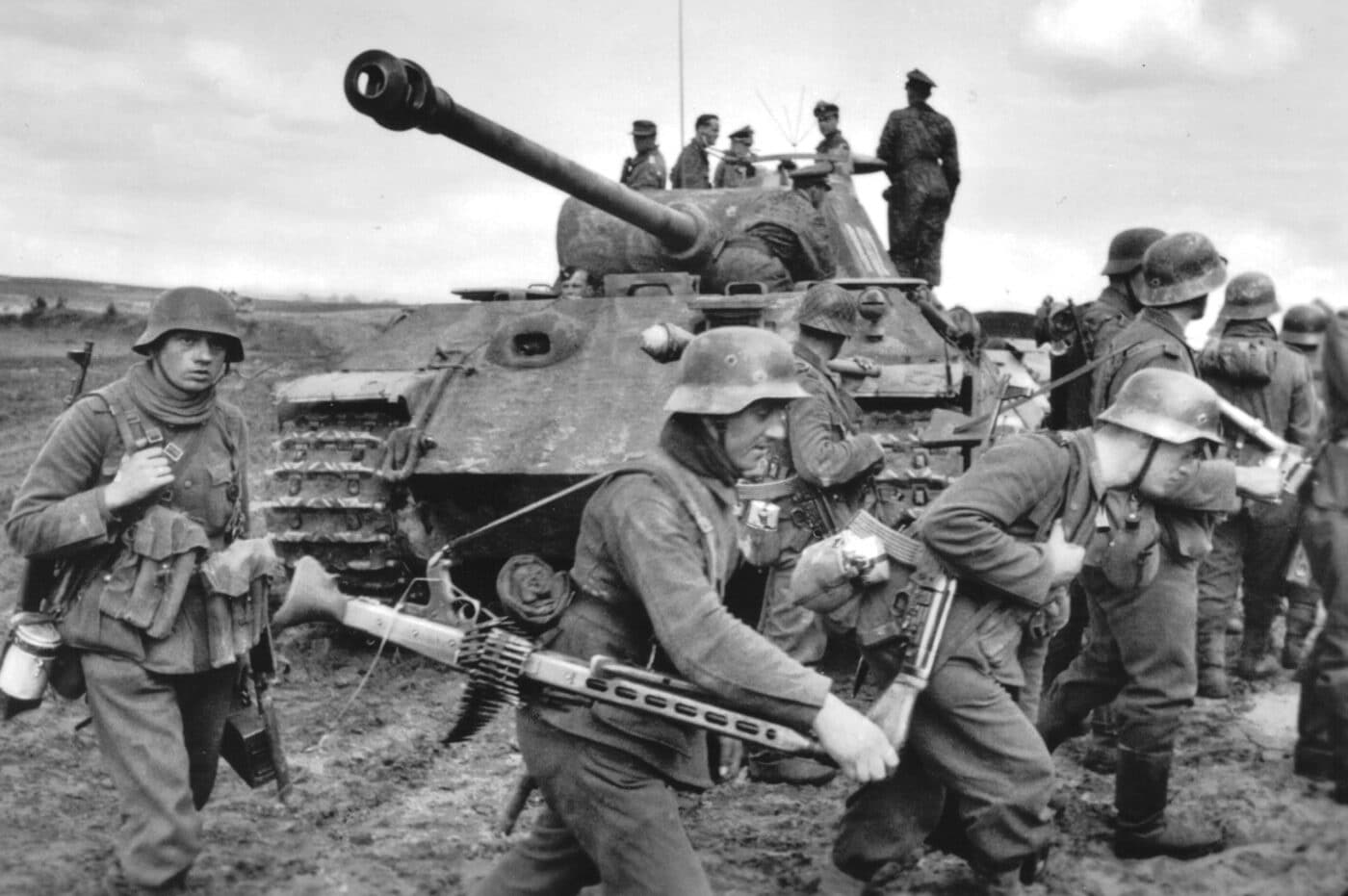
By 1942, Germany was mired in a bloodbath campaign of epic proportions on the Eastern Front. The fighting in Russia consumed men and machines at an ever-increasing rate, and Germany’s need for advanced infantry firepower was immediate and severe. German experiments to use the standard 7.92x57mm cartridge in a light rifle had not worked, and the path to success pointed to the need for an entirely new cartridge.
German logistics were already over-stretched and just like every other nation, funding for new projects had to get approval from the top. Early efforts to cut the standard cartridge down to 7.92×33mm Kurz had shown promise, and both Walther and Haenel were asked to submit prototypes for a new gas-operated, selective-fire “Machine Carbine” (German designation Maschinenkarabiner 1942 or “MKb 42”) that used the new “Kurz” cartridge.
What’s in a Name?
Development continued until financial concerns and departmental infighting became evident, and Hitler intervened. He was not a fan of the new “Kurz” round (at least not initially), and he had become enamored with submachine guns. Consequently, all new “rifle” development projects were put on hold.
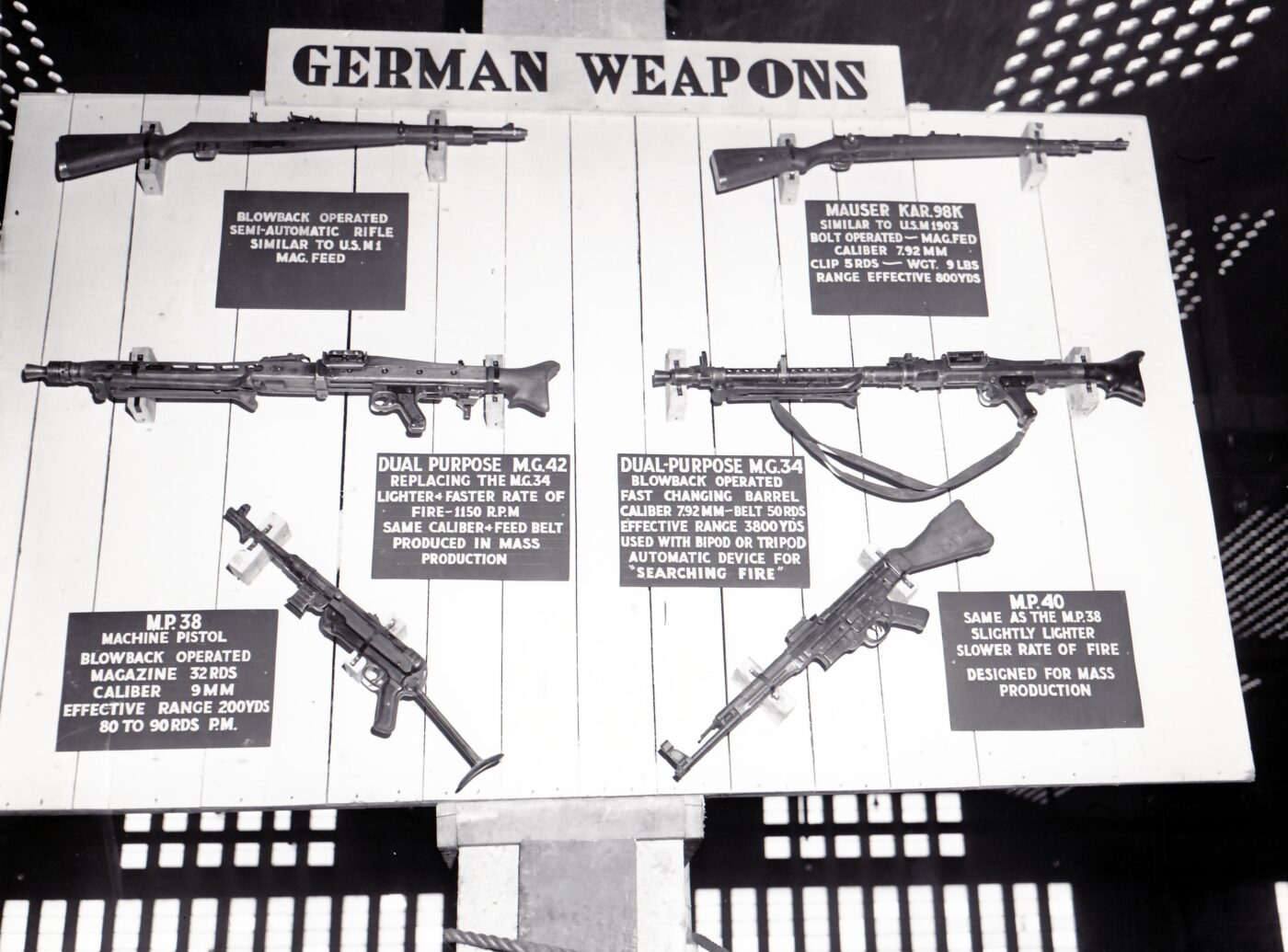
Thus, the mechanically accurate term “machine carbine” was standing in the way of a firearms breakthrough, so the German armaments ministry did something particularly un-German: they reclassified the project under an incorrect title to sneak it past the Fuhrer and get at least a modicum of funding. That is how the new weapons system became the “MP43”, or “Machinen Pistole”. I can only imagine how many German engineers ground their teeth down at the very thought of officially mislabeling a firearm just so they could continue to work on it.
Once the design team came to the realization that the MP43 was not going to replace the standard Kar 98k rifle, but rather supplement it, the new weapon finally began to take shape. Issued in small numbers to troops on the Eastern Front, the MP43s were successful and popular. The Fuhrer discovered the ruse, and after a short time he allowed it to proceed in limited fashion for evaluation purposes only.
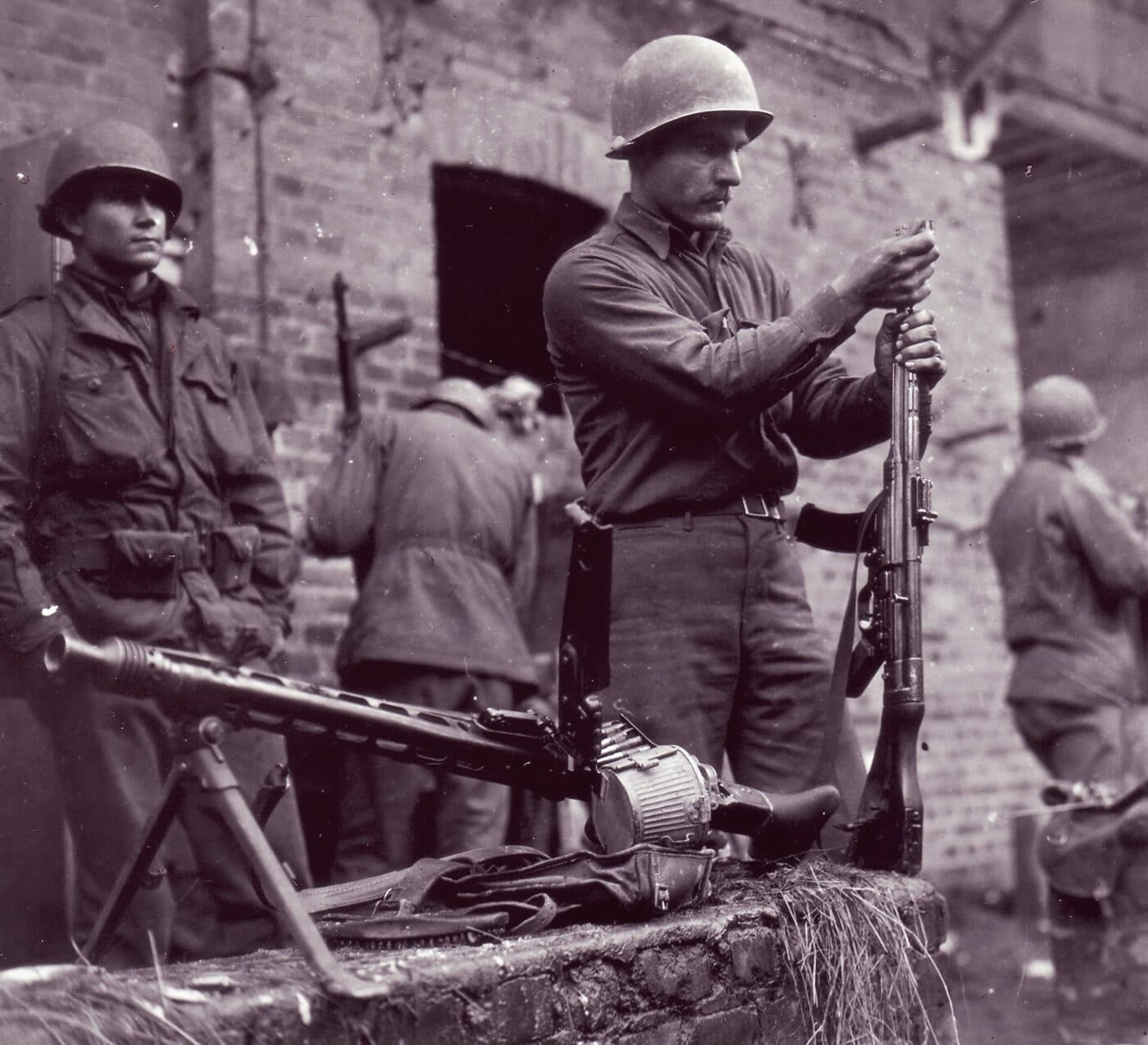
The “MP43” functioned well and then began wider production and distribution as the “MP44”. By July 1944, German generals commanding troops on the Eastern Front came to ask for as many of the new rifles as they could get. Hitler finally watched a demonstration of the MP44, and the old infantryman was delighted with what he saw.
The Fuhrer himself is said to have coined the term “Sturmgewehr”, and it stuck, finally and officially. The MP44 became the Sturmgewehr 44 (StG44). Ever since, the term “assault rifle” has bedeviled ordnance men, nomenclature mavens, sport shooters, and particularly American media and politicians. Blame Hitler.
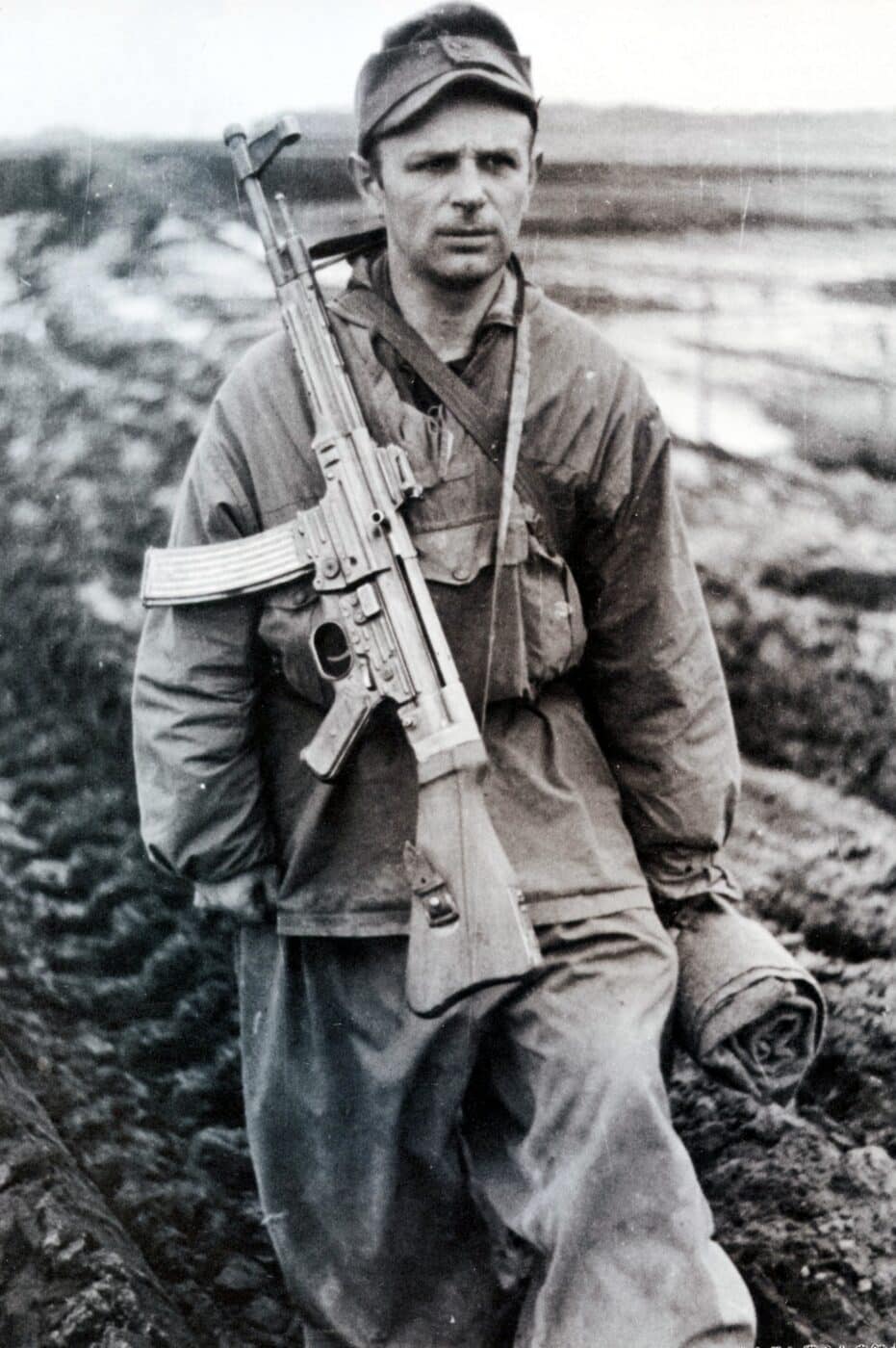
U.S. Ordnance became fixated on the machine pistol (“MP) moniker stamped on the initial examples of the Sturmgewehr that were captured in France during 1944. Until the early 1960s, American documents about the StG44 called it a “submachine gun”. U.S. Ordnance slapped this same term on the Soviet AK-47, a rather famous and similar-looking descendant of the StG44.
Officially, the initial U.S. Ordnance reviews of the MP43/MP44 judged it to be a poor weapon. An October 1944 Ordnance review of a captured MP43 described it to quickly overheat to dangerous levels when fired on full auto (with concerns of a “cook off” in a hot chamber). They didn’t like the stamped metal construction, the crudeness of the stock, or the use of rivets in assembly. Most of all, this report (and others I have read) really did not like the new 7.92mm Kurz cartridge, primarily for the complexity it added to an already strained armaments logistical system.
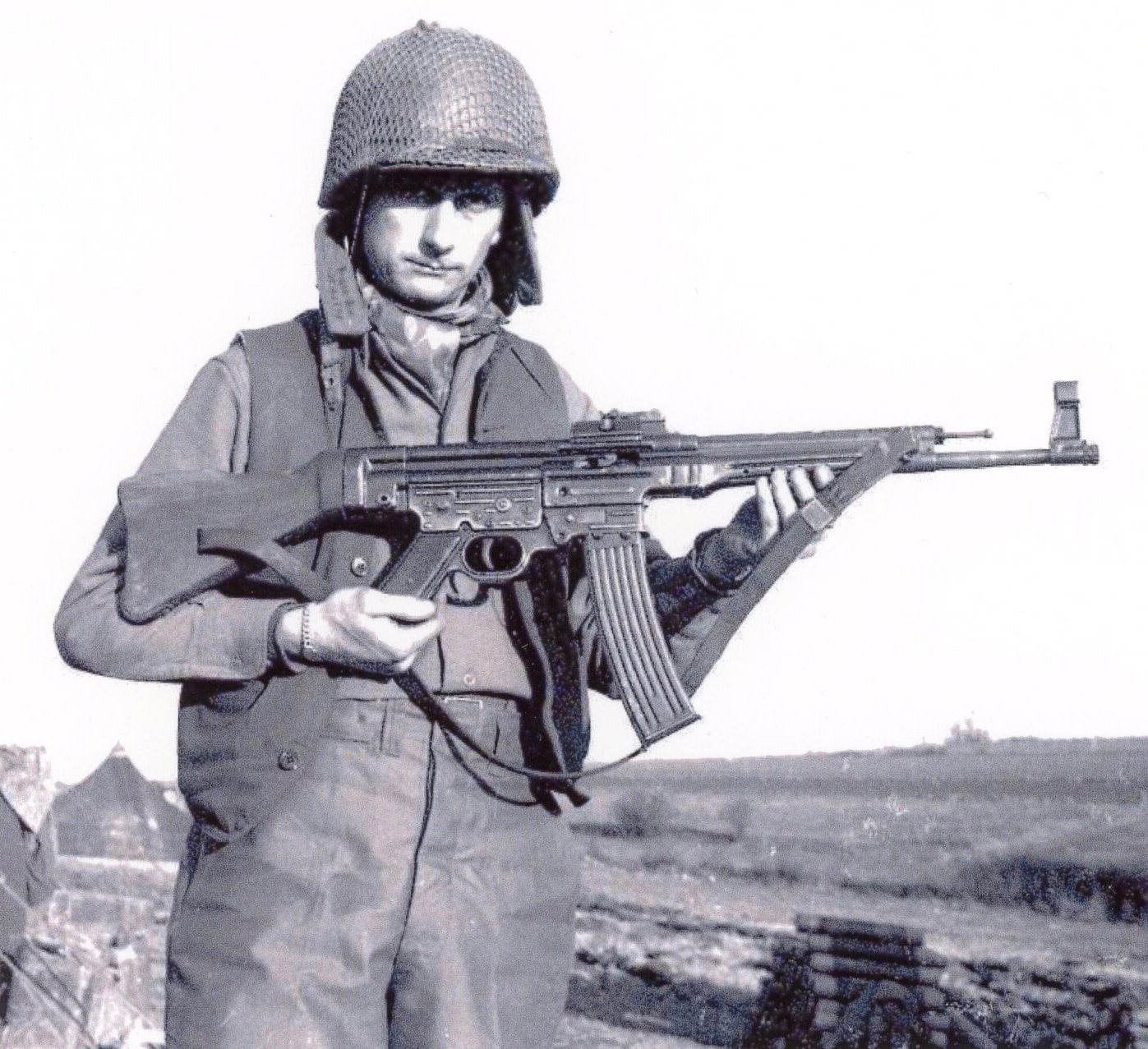
Anecdotal evidence from G.I.s in the field was rather different, though. The new German automatics were popular battlefield pick-ups, and some American troops were using the StG44 against its former owners. It was common for G.I.s to use various German weapons as they found them, but the newfangled StG44 seemed to generate even more interest than other Nazi small arms.
W.H.B Smith took a more open-minded view of the Sturmgewehr. Writing in his 1948 edition of “Small Arms of the World” (Military Service Publishing), he described the weapon as follows:
German Machine Pistol 44: 7.92mm Special
This weapon was originally developed in 1942 to provide an intermediate arm between the rifle and the submachine gun. In many respects, it has uses similar to our Carbine M1; but has the disadvantage of greater weight, while having the advantages of a ballistically better cartridge, greater firepower and emergency full automatic fire.
It was originally listed by the Russians as a “Machine Carbine”. British reports also gave it this identification. In European usage this term usually means what we call a submachine gun, and what the Germans call a machine pistol—that is to say a full automatic weapon using pistol cartridges.
While this weapon is made up very largely of cheap stampings, a tremendous amount of engineering has been built into the gun. The stampings themselves have been designed to provide a maximum of reinforcement.
The special features of this weapon are so outstanding that they are worthy of the closest attention from arms designers.
The cartridge too is a remarkable achievement, being a cut-down version of the standard bottle-neck rifle cartridge using a 125-grain pointed bullet. Muzzle velocity of some 2250 fps results in good accuracy at effective ranges.
While the Germans called the design a Machine Pistol, it is adapted only to carbine use.
Receiver, jacket, frame and front sight hood are all stampings. Only the piston assembly, gas cylinder, barrel and nut, bolt and hammer are well machined. The stock is cheaply constructed. Economy and speed of manufacture coupled with effective performance to at least 400 yards are the outstanding virtues of the design; though the Germans claimed an effective range of about 650 yards.
The forerunner of this design was the Maschinen Karabiner (M.K.42) used against the Russians. The first form to appear against our troops was the MP (Maschinen Pistole) 43. Modifications were issued as the MP43/I and MP44. The last named was designed to permit use of the standard German rifle grenade launcher.
In 1944 the German High Command announced the wide distribution of the arm under a new name assigned by Hitler, “Sturmgewehr 44” that is, Storm (or Assault) Rifle 44.
Note: as originally issued the MKb 42 had an abnormally high rate of fire, running as high as 800 rpm with the spring buffer in position.
The fire rate was scaled down in later types to about 500 per minute, but even this rate was intended only for burst fire of three rounds or so. Directives issued by the Germans in 1944 ordered semi-automatic use only, except in cases of emergency or opportunity.
On the other hand, letters from scores of American soldiers who captured and used these arms insist they used them as full automatic weapons with satisfactory results. My own limited test firing of such arms showed results agreeing with those of the correspondents mentioned, insofar as target and operating results were concerned.
“Small Arms of the World” (Military Service Publishing, 1948 Edition)
The American Answer
Even with the great M1903 Springfield rifle and the excellent new M1 Garand rifle in service, U.S. Ordnance was interested in developing a modern carbine (“light rifle”) as early as 1938. The Chief of Infantry’s request finally led to a design competition among several major American firearms manufacturers in early 1941. The Winchester design was selected and on October 22, 1941, the United States Carbine, Caliber .30, M1 was standardized.
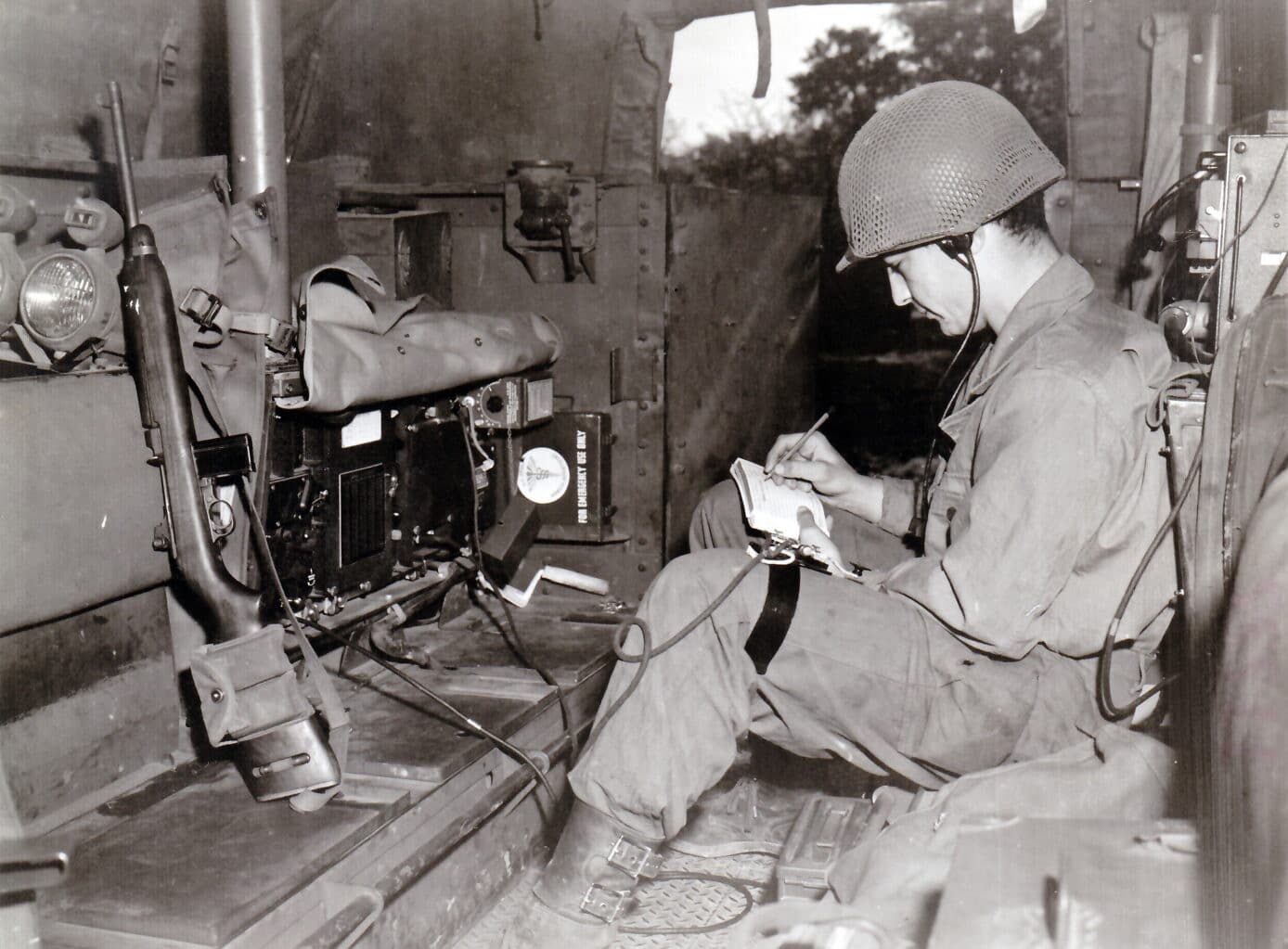
The new .30 Carbine ammunition was a development of the .32 Winchester self-loading rifle cartridge. The new rimless round used much more powerful modern powder, delivering performance more than 25% greater than the original .32 cartridge. By comparison, the .30 Carbine round is twice as powerful as the .45 ACP used in the Thompson submachine gun, but only a third as powerful as the .30-06 ammunition used in the M1 Garand rifle. Used in a rifle that weighs less than 6 lbs. and measures slightly less than three feet long, the .30 Carbine was a relatively potent addition to America’s infantry arsenal.
Originally intended to give artillerymen, communications troops, drivers, messengers and officers a handy weapon with more range and accuracy than the M1911 pistol or Thompson SMG, the M1 Carbine became very popular after its introduction. A folding-stock variant (the M1A1) was soon developed to meet the needs of paratroops. But the M1 Carbine suffered from a widespread misunderstanding of what the little rifle could do well. Its effective firing range was little more than 200 yards, and its knock-down power was somewhat of a disappointment.
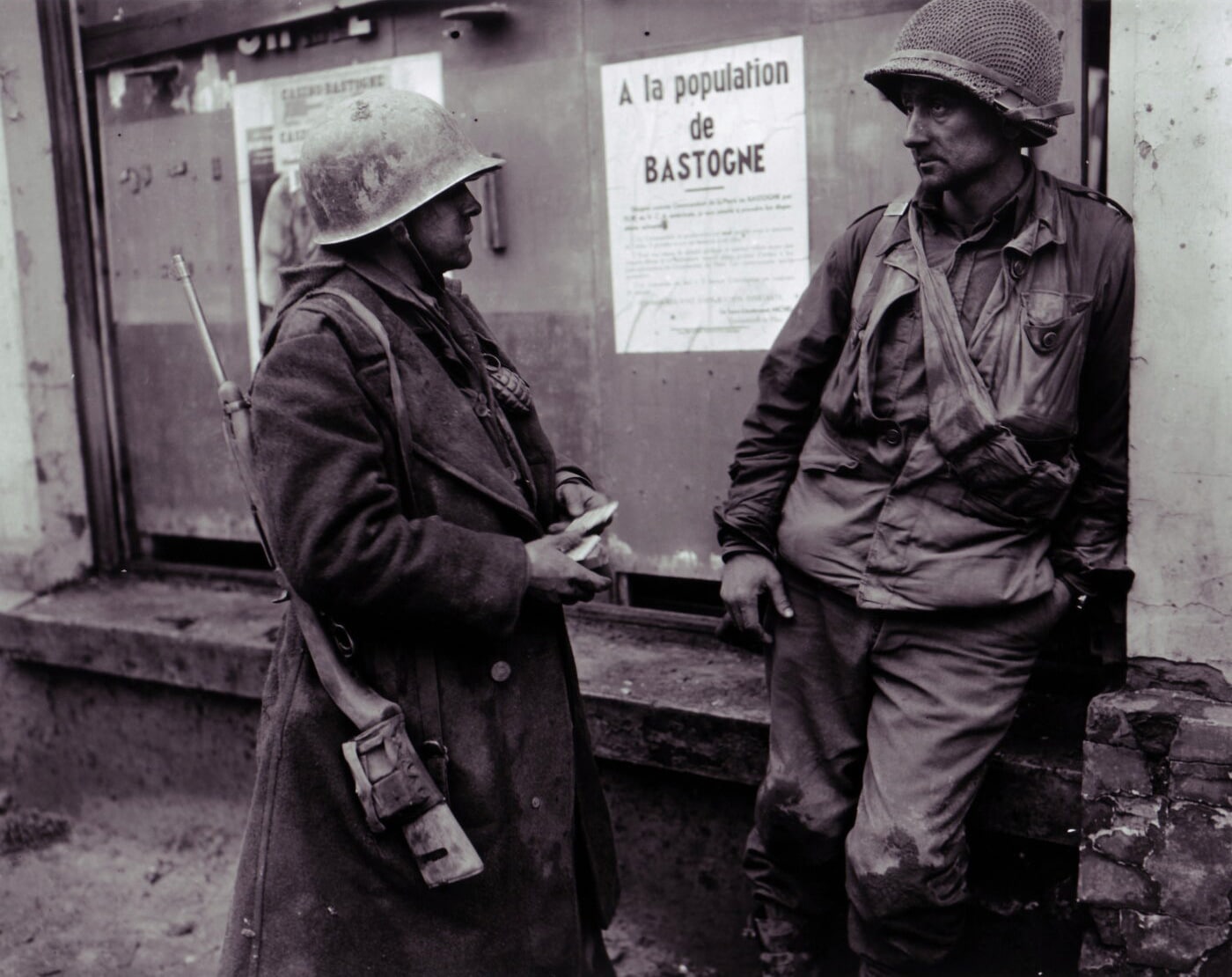
The select-fire M2 Carbine (with a 30-round magazine) was not provided to the troops in any meaningful numbers by the end of World War II. After the war, the arsenal rebuild program for the M1 Carbine provided select-fire conversion kits, new adjustable rear sights, new safeties and bayonet lugs for many of the rifles. On full auto, the Carbine cycles at nearly 750 rounds per minute and is very controllable.
Lt. Colonel John George provides us with an excellent review of the M1 Carbine in combat in his fantastic book “Shots Fired in Anger: A Rifleman’s View of the War in the Pacific, 1942-1945” (NRA Publications, 1981).
The .30 Caliber Carbine
The carbine turned out to be an ace weapon of this war, as far as I am concerned. It was light and handy, powerful, and reasonably accurate. If I had to make my own way in a hostile jungle, travelling with the lightest possible kit where I should be likely to encounter enemy at any time, the carbine is the weapon I would choose.
The development of the carbine had the effect of putting a good offensive-defensive weapon in the hands of the leader and gun crew member, thereby making him the near-equal of an M1 rifleman. The cartridge was powerful enough to penetrate several thicknesses of helmet, and to perforate the plates of the Japanese bullet proof vests, which would only be dented by .45 auto slugs. It was flat shooting enough to have practical accuracy at more than two hundred yards. It would be interesting to know how many casualties it created during the war. Certainly more than all the pistols and revolvers our military has ever used.
The great advantage was that it got a gun that could shoot into the hands of the average infantryman. The pistol, as far as general usage is concerned, is a purely defensive weapon, accurate only when in the hands of an expert. The carbine performed moderately well in the hands of dubs. For many types of offensive fighting, such as sneak raids and infiltration tactics, it was often superior even to the M1, penetration being the only point of difference.
The greatest advantage of the carbine was its lightweight, which is the greatest advantage any infantry weapon can have. Of all the guns we used in this war it is the only one which does not need further reduction in heft. The rest are all too heavy for the job they do.
The advent of the carbine later on in the war eliminated, in my opinion, the last need for a Tommy gun. The carbine made a much more accurate offensive weapon, and a much quicker pointing and more accurate defensive weapon. The lighter weight and greater penetrating power of the .30 caliber carbine cartridge increased this margin of superiority even more.
“Shots Fired in Anger: A Rifleman’s View of the War in the Pacific, 1942-1945” (NRA Publications, 1981)
On the Battlefield
Both the StG44 and the M1 Carbine provided good solutions to the design challenge of creating a modern carbine. The M1 Carbine has the more elegant, traditional look of wood and steel. The StG44 cemented the image of the new wave of utilitarian, stamped-steel assault rifle designs. Both would strongly influence the next generation of infantry rifles that would face each other again in the Cold War.
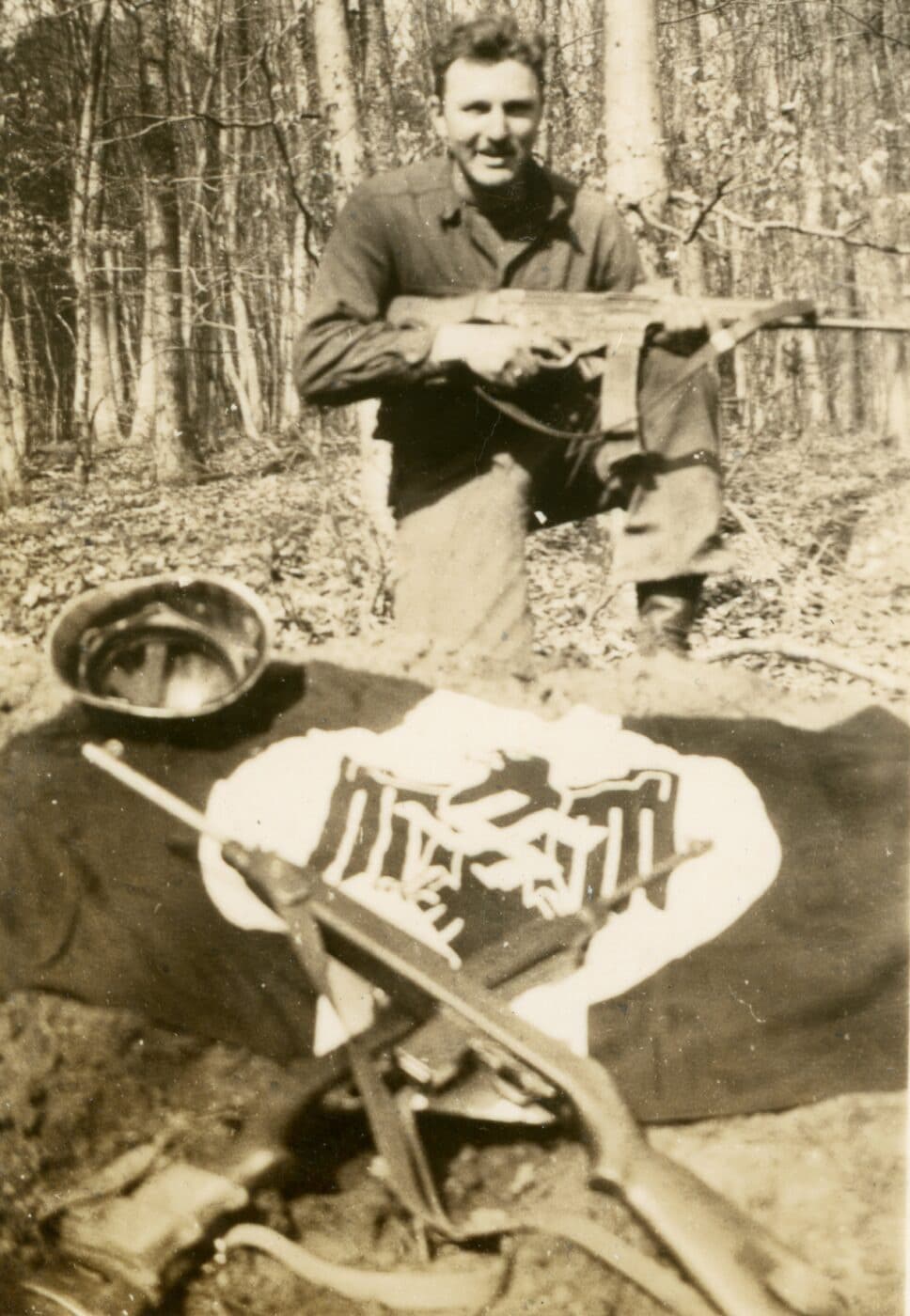
During World War II, the need for infantry firepower grew greater with each battle. The Sturmgewehr made a huge impression on its Soviet opponents, and its 7.92mm Kurz cartridge drove the Red Army to develop their own 7.62x39mm intermediate round even before they had a rifle to fire it. A few years after WWII, the Soviet AK-47 would leverage elements of its German assault rifle predecessor to become the most common military rifle on the planet. Meanwhile, the M1 Carbine served with U.S. troops wherever they served, from Western Europe to the Pacific Islands.
Both had their detriments and detractors: the Sturmgewehr rapidly overheated when used for full-auto fire, and elements of its construction left much to be desired. The M1 Carbine was often found wanting in effective range and penetrating power. However, their detractors never outnumbered their proponents, and both weapons served their owners well.
Both have soldiered on since 1945. The StG44 still appears in small numbers in strange places — a handful have been photographed in use in the current Syrian Civil War. As for the M1 Carbine, more than 6.1 million were made in WWII alone, and since that time they have been distributed throughout the world and used in conflicts both great and small. American troops carried them in the Korean War and in the early stages of the Vietnam War.
Conclusion
I suspect that my editor wants me to declare a winner in this gun battle, but the historical evidence will ultimately lead to a hung jury. Full disclosure, I am a huge fan of the M1 Carbine and I have taught many first-time rifle shooters with it. The look on their face when they achieve good results using a famous WWII rifle tells me it is a very well-designed firearm. This same outcome would not be possible with a StG44.
Ultimately, I believe that the M1 Carbine was a victory in the moment, and the Sturmgewehr was a harbinger of the future of military rifles. Fortunately for America, opposing force rifles, StG44 and its descendants, have always come up short in combat against our troops and whatever they carried.
Editor’s Note: Be sure to check out The Armory Life Forum, where you can comment about our daily articles, as well as just talk guns and gear. Click the “Go To Forum Thread” link below to jump in!
Join the Discussion
Continue Reading
Did you enjoy this article?

 377
377






